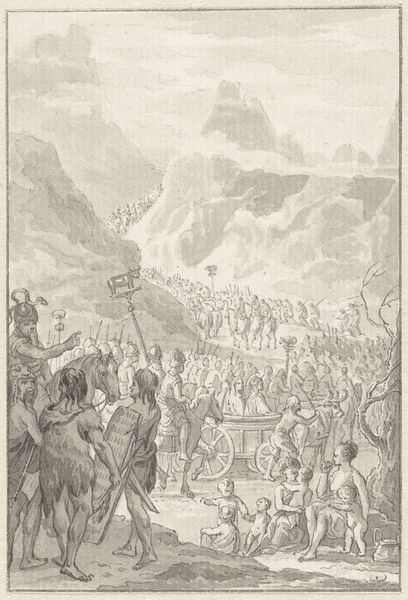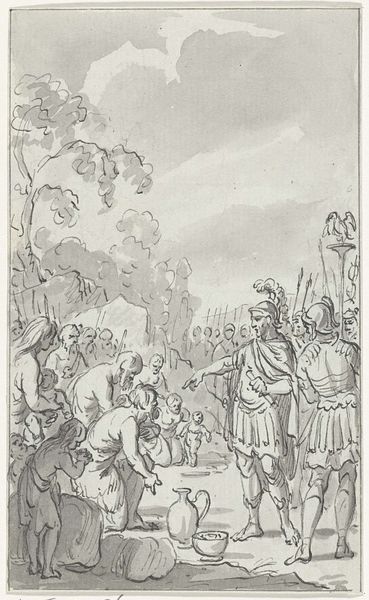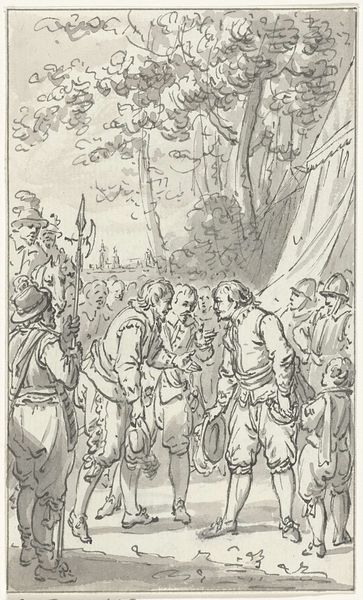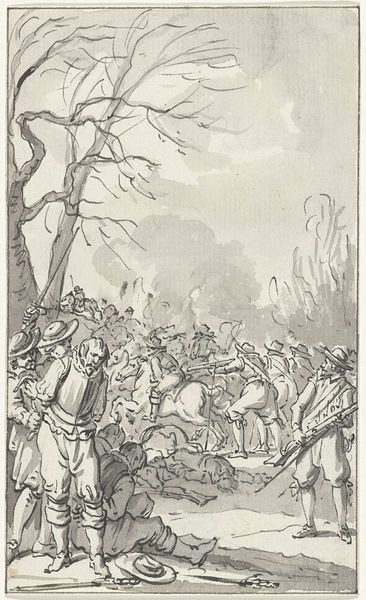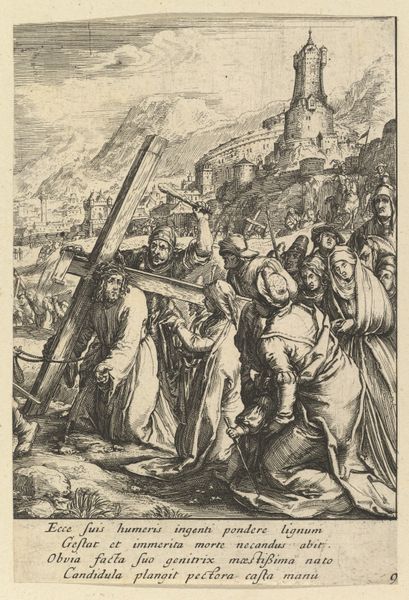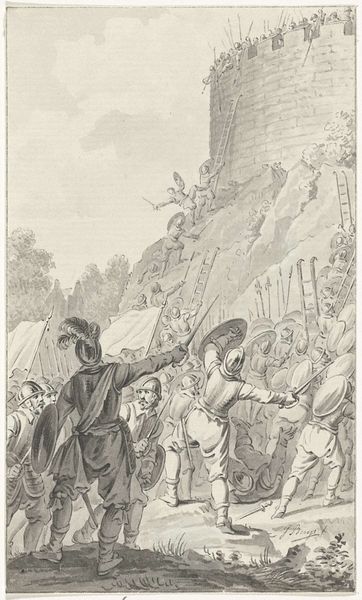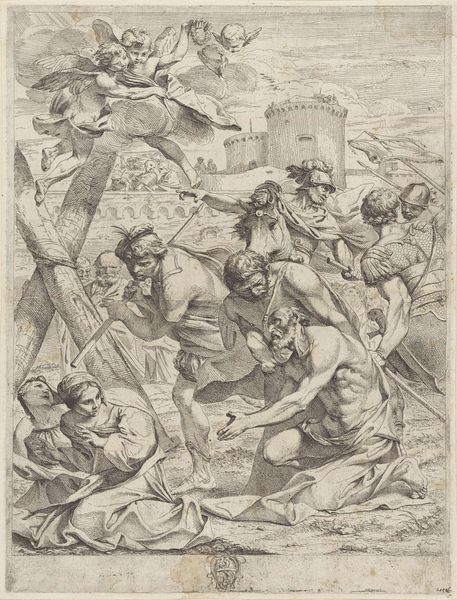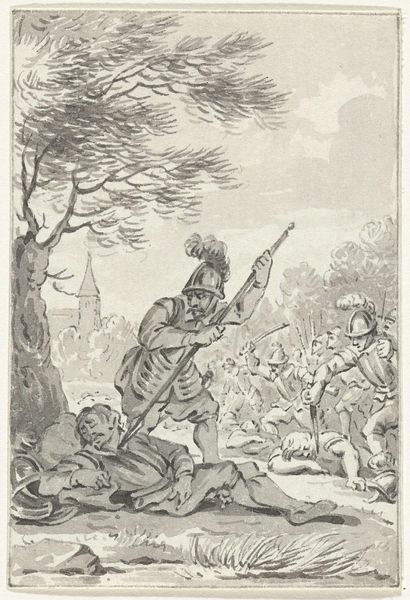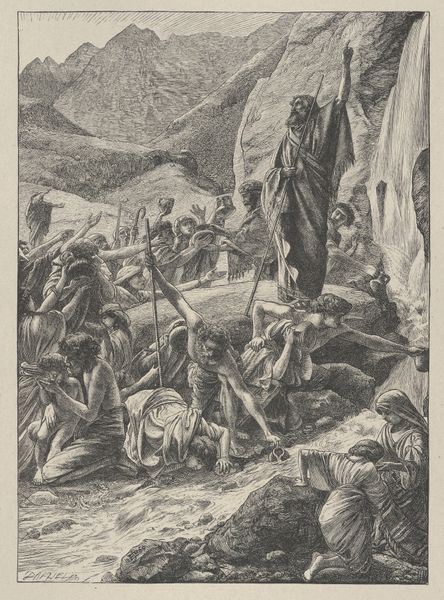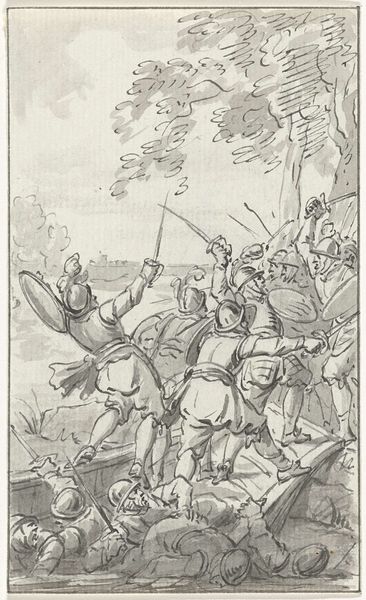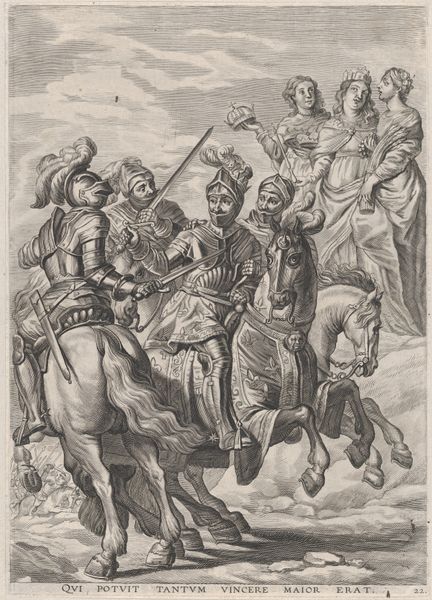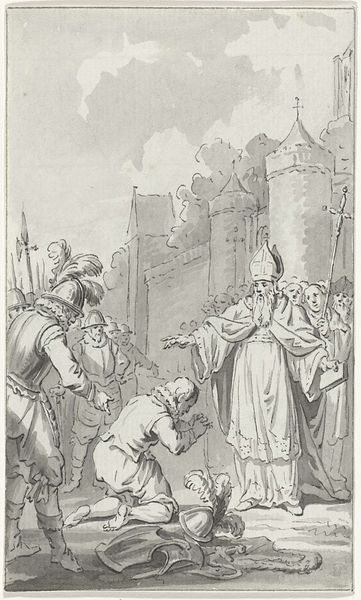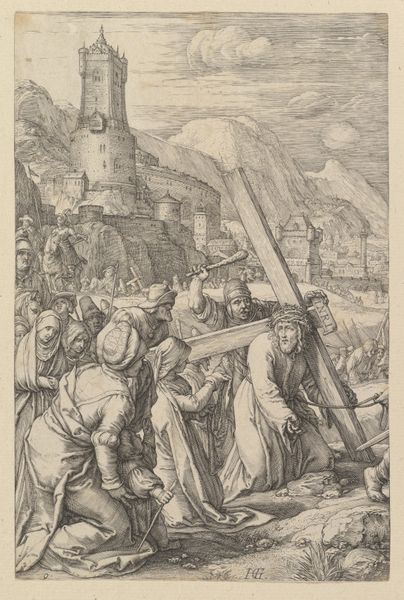
Dimensions: height 149 mm, width 90 mm
Copyright: Rijks Museum: Open Domain
Editor: This drawing, titled "Gravin Ada belegerd in de Burcht van Leiden, 1204," was created by Jacobus Buys between 1783 and 1785, using pen and ink. The figures create a dynamic upwards diagonal. What structural elements do you find most compelling in this work? Curator: The diagonal, precisely. It's not merely dynamic but destabilizing. Buys uses it to create a visual tension, mimicking the instability of siege warfare. Observe how the lines themselves, though delicate, contribute to a sense of controlled chaos. Do you notice how the lightness of touch emphasizes the precariousness of the figures scaling the wall? Editor: I see what you mean. It almost feels like the figures are about to tumble down the steep slope! The high contrast definitely contributes to the drama. It appears the technique lends itself to depicting narrative. Curator: Precisely! Now, look at the composition in terms of visual weight. Where does your eye tend to linger, and why? Editor: My eyes keep going towards the tower with figures swarming to enter the castle. Maybe because it's where the most is happening but it's also one of the lightest areas in the composition. Curator: The convergence of lines and the concentrated activity around the tower do act as a focal point, guiding the viewer's eye. The strategic placement underscores the central narrative of the siege itself, no? Editor: Absolutely. Seeing how the artist used formal elements creates another dimension to the narrative of the work. I initially saw it as chaotic, but there is organization in the shapes, lines and composition of the pen strokes. Curator: Indeed. Analyzing the artwork in this way, decoupled from symbolic intent, can itself be rewarding. It’s clear the strength and effectiveness in the artwork lies in the details and forms used, and how it all comes together to depict its theme.
Comments
No comments
Be the first to comment and join the conversation on the ultimate creative platform.
